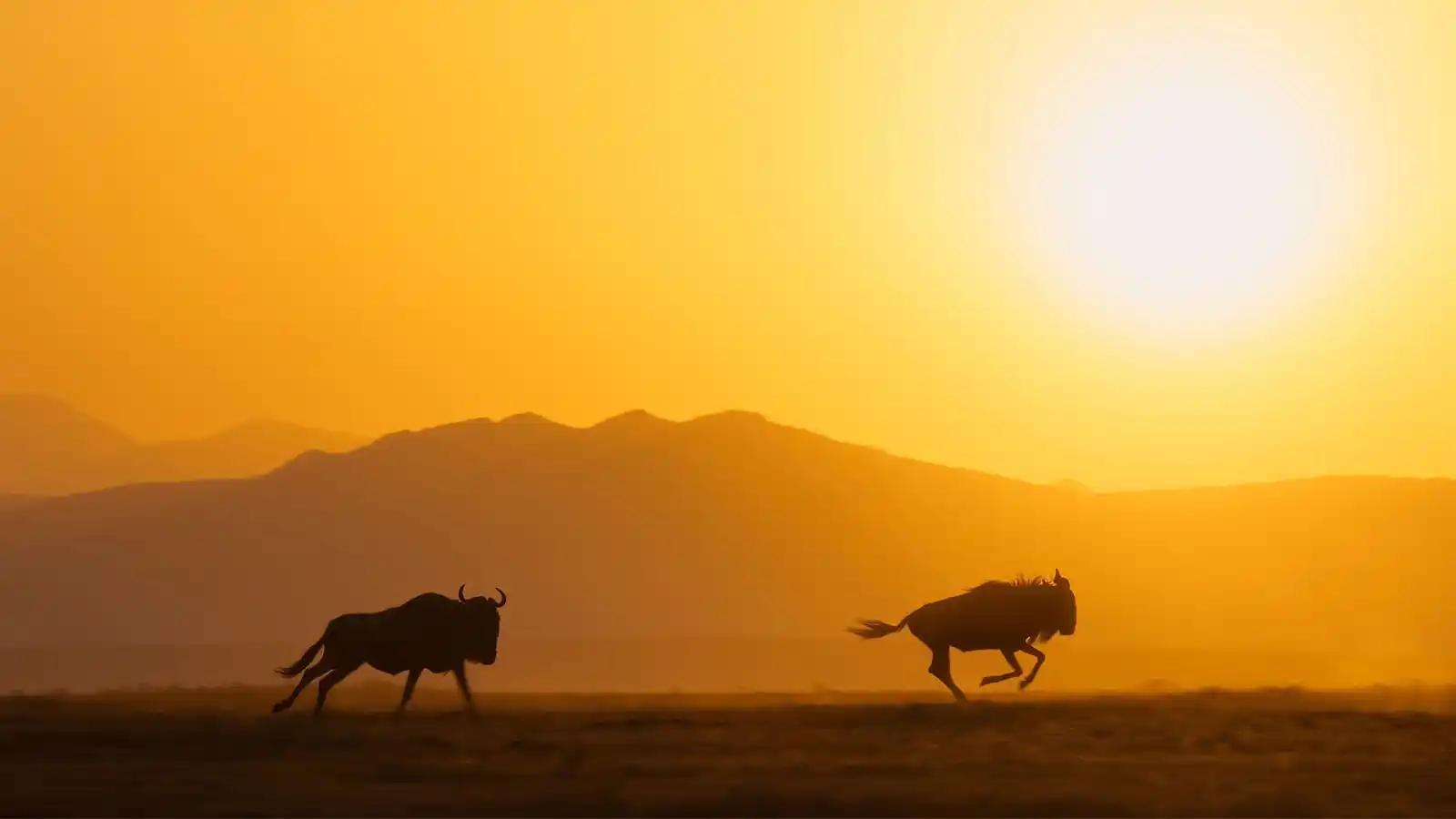A Perfect Planet episode 2 - The Sun

A Perfect Planet episode 2 - The sun is the undisputed master of our solar system, a celestial force that orchestrates the rhythm of life on Earth. From the frozen poles to the searing deserts, every creature has adapted ingenious strategies to navigate the uneven distribution of sunlight across our planet's diverse landscapes. In the second episode of the groundbreaking series "A Perfect Planet," Sir David Attenborough takes us on a captivating journey, unveiling the intricate dance between the sun's radiance and the resilience of life.
A Perfect Planet episode 2 - The Sun
Beneath the frozen Arctic tundra, the show unveils the remarkable survival tactics of the Arctic ground squirrel. These tenacious rodents have mastered the art of hibernation, plunging into a deep slumber as the sun's warmth fades during the long, frigid winters. Their bodies slow to a near halt, conserving precious energy until the first rays of spring beckon them to awaken and replenish their dwindling reserves.
In stark contrast, the scorching deserts of the world present a different set of challenges, where the sun's relentless heat can be as unforgiving as the bitter cold. Here, we witness the ingenious adaptations of the desert-dwelling Namib beetle, a master of water harvesting. These remarkable insects have evolved a unique ability to condense moisture from the early morning fogs, using their textured backs as natural condensers. Each droplet is a precious elixir, sustaining life in one of the harshest environments on Earth.
A Perfect Planet episode 2 - The Sun
But the sun's influence extends far beyond the extremes of heat and cold. In the lush tropical rainforests, where sunlight filters through a dense canopy, a delicate balance is struck between light and shade. Here, we encounter the extraordinary phenomenon of bioluminescence, where certain fungi and insects have evolved the ability to produce their own light, creating an ethereal glow in the dimly lit understory.
Throughout this captivating episode, Attenborough's renowned narration weaves a tapestry of awe-inspiring stories, each one a testament to the incredible diversity of life on our planet. From the Arctic fox's insulating coat to the desert lizard's ability to bask in the sun's warmth, every adaptation is a masterpiece of evolution, finely tuned to the rhythms of the sun's cycles.
But "A Perfect Planet" is more than just a celebration of nature's wonders; it is a call to action, a reminder that our planet is a rare and precious gem in the vast expanse of the universe. As Attenborough eloquently states, "Our planet is one in a billion, a remarkable oasis of life in a cosmos that is largely hostile to its existence."
The series invites us to reflect on the delicate balance that sustains life on Earth and our role as stewards of this incredible world. With every captivating scene, we are reminded of the intricate web of interconnectedness that binds all living beings to the sun's life-giving energy.
As we gaze up at the sun, a celestial orb that has nurtured life for billions of years, we are filled with a profound sense of reverence and responsibility. For it is our duty, as Attenborough reminds us, to ensure that humanity becomes a force for good, a guardian of this "perfect planet" that has bestowed upon us the extraordinary gift of life.
A Perfect Planet episode 2 - The Sun
Saharan silver ant
The Saharan silver ant is a species of insect that lives in the Sahara Desert. It is the fastest of the world’s 12,000 known ant species, clocking a blistering velocity of 855 millimetres per second (nearly 1 m/s or 3.6 km/h). It can travel a length 108 times its own body length per second, a feat topped only by two other creatures, the Australian tiger beetle Cicindela eburneola and the California coastal mite Paratarsotomus macropalpis. This is nearly the walking pace of a human being, and compared to its body size would correspond to a speed of about 200 m/s (720 km/h) for a 180 cm (6 ft) tall human runner.
Largely due to the extreme high temperatures of their habitat, but also due to the threat of predators, the ants are active outside their nest for only about ten minutes per day. The twin pressures of predation and temperature restrict their above-ground activity to within a narrow temperature band between that at which predatory lizards cease activity and the ants' own upper threshold.
The ants often traverse midday temperatures around 47 degrees Celsius (117 degrees Fahrenheit) to scavenge corpses of heat-stricken animals. To cope with such high temperatures, the ants have several unique adaptations.
Sahara - A Perfect Planet episode 2
The Sahara is a desert on the African continent. With an area of 9,200,000 square kilometres (3,600,000 sq mi), it is the largest hot desert in the world and the third largest desert overall, smaller only than the deserts of Antarctica and the Arctic. The name 'Sahara' is derived from the Arabic word for "desert", ṣaḥra.
The desert comprises much of North Africa, excluding the fertile region on the Mediterranean Sea coast, the Atlas Mountains of the Maghreb, and the Nile Valley in Egypt and Sudan. It stretches from the Red Sea in the east and the Mediterranean in the north to the Atlantic Ocean in the west, where the landscape gradually changes from desert to coastal plains. To the south, it is bounded by the Sahel, a belt of semi-arid tropical savanna around the Niger River valley and the Sudan Region of Sub-Saharan Africa. The Sahara can be divided into several regions, including the western Sahara, the central Ahaggar Mountains, the Tibesti Mountains, the Aïr Mountains, the Ténéré desert, and the Libyan Desert.
For several hundred thousand years, the Sahara has alternated between desert and savanna grassland in a 20,000 year cycle caused by the precession of the Earth's axis as it rotates around the Sun, which changes the location of the North African Monsoon. The area is next expected to become green in about 15,000 years (17,000 CE).
Arctic wolf
The Arctic wolf (Canis lupus arctos), also known as the white wolf or polar wolf, is a subspecies of grey wolf native to Canada's Queen Elizabeth Islands, from Melville Island to Ellesmere Island. It is a medium-sized subspecies, distinguished from the northwestern wolf by its smaller size, its whiter colouration, its narrower braincase, and larger carnassials. Since 1930, there has been a progressive reduction in size in Arctic wolf skulls, which is likely the result of wolf-dog hybridization.
In 1935, the British zoologist Reginald Pocock attributed the subspecies name Canis lupus arctos (Arctic wolf) to a specimen from Melville Island in the Queen Elizabeth Islands, Canada. He wrote that similar wolves could be found on Ellesmere Island. He also attributed the name Canis lupus orion to a Greenland wolf specimen from Cape York, northwest Greenland. Both wolves are recognized as separate subspecies of Canis lupus in the taxonomic authority Mammal Species of the World (2005).
Ellesmere Island - A Perfect Planet episode 2
Ellesmere Island is part of the Qikiqtaaluk Region in the Canadian territory of Nunavut. Lying within the Arctic Archipelago, it is considered part of the Queen Elizabeth Islands, with Cape Columbia being the most northerly point of land in Canada. (The most northerly point of land on Earth is the nearby Kaffeklubben Island in Greenland). It comprises an area of 196,235 km2 (75,767 sq mi) and the total length of the island is 830 km (520 mi), making it the world's tenth largest island and Canada's third largest island. The Arctic Cordillera mountain system covers much of Ellesmere Island, making it the most mountainous in the Arctic Archipelago. The Arctic willow is the only woody species to grow on Ellesmere Island
F.A.Q. about "A Perfect Planet - Episode 2: The Sun"
Q1: What is "A Perfect Planet - Episode 2: The Sun" about?A.: "A Perfect Planet - Episode 2: The Sun" explores the pivotal role the sun plays in sustaining life on Earth. Narrated by Sir David Attenborough, this episode showcases how various species have adapted to harness the sun's energy across different environments, from the Arctic's frigid landscapes to the scorching deserts.Q2: Who is the narrator of "A Perfect Planet - Episode 2: The Sun"?A.: The renowned broadcaster and natural historian Sir David Attenborough narrates the episode, bringing to life the intricate relationships between the sun and the myriad forms of life on our planet.Q3: What are some examples of animal adaptations featured in this episode?A.: The episode highlights several fascinating adaptations, such as the Arctic ground squirrel's hibernation techniques to survive the winter and the Namib beetle's unique method of harvesting water from fog, demonstrating the diverse strategies life forms employ to thrive under the sun's influence.Q4: What message does "A Perfect Planet - Episode 2: The Sun" convey about our planet?A.: Beyond showcasing nature's wonders, the episode serves as a call to action, emphasizing Earth's uniqueness and the critical balance that sustains life. It urges viewers to recognize their role as stewards of this precious planet, highlighting the interconnectedness of all living beings and the importance of preserving our world for future generations.Q5: How does the sun influence ecosystems according to the episode?A.: The sun is depicted as the engine of biodiversity, driving the rhythms of life across ecosystems. From dictating the seasonal behaviors of animals to influencing the growth patterns of plants and the climate itself, the sun's energy is shown as a fundamental force that shapes the living world in myriad ways.Q6: Can you discuss the significance of bioluminescence as featured in the episode?A.: Bioluminescence is presented as a remarkable evolutionary adaptation to the limited sunlight in dense tropical rainforests. By producing their own light, certain fungi and insects not only navigate the darkness but also attract mates and prey, showcasing the innovative ways life evolves to exploit the sun's energy, even in its absence.Q7: What unique challenges do animals face in extreme environments, according to the episode?A.: Animals in extreme environments, like the Arctic and deserts, face harsh conditions due to the sun's uneven distribution. The episode illustrates how species such as the Saharan silver ant and the Arctic wolf have developed unique adaptations to manage extreme temperatures and make the most of their brief opportunities to find food, reproduce, and survive.Q8: How does "A Perfect Planet - Episode 2: The Sun" contribute to our understanding of climate change?A.: While primarily focused on natural history, the episode indirectly enhances our understanding of climate change by illustrating the delicate balance of ecosystems dependent on the sun. It subtly underscores the potential impact of climate change on these finely tuned systems, highlighting the importance of sustainable practices to protect our planet's biodiversity.
Conclusion A Perfect Planet episode 2:
"A Perfect Planet - Episode 2: The Sun" offers an expansive and captivating journey into the vital role that the sun's energy plays in shaping life on Earth. Narrated by the iconic Sir David Attenborough, this episode marries mesmerizing cinematography with insightful commentary, guiding viewers through the myriad ways in which the sun's vast power influences the adaptability and resilience of Earth's diverse ecosystems.
From the delicate balance of climates to the intricate processes sustaining life in the most extreme environments, each scene is a testament to the beauty and complexity of our world. Beyond its visual splendor and educational value, the episode stands as a profound call to action, urging us to recognize our duty in safeguarding this delicate interplay of natural forces for future generations.
https://hdclump.com/a-perfect-planet-episode-2-the-sun/


